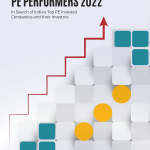
More than a decade ago, in 2011 to be precise, the now-defunct Financial Services Authority of the UK had made an interesting statement as part of a report that probed the Bank of Scotland’s failure in 2008. “The fact that no individual has been found legally responsible for the failure (of the RBS) begs the question: if action cannot be taken under existing rules, should not the rules be changed for the future?” Lord Adair Turner, the then FSA chairman, had asked, rather astutely. Of course, those who were supposed to answer the question just shut down the FSA, claiming that the quasi-judicial organization was relying on over-regulation to fix things.
However, the Lord Turner’s question remained pertinent and is today tied to decision rights, a component of organizational design, that relies on three simple questions*:
- Who are the individuals or groups empowered to make decisions?
- What decisions must be made?
- How do operating processes and tools help support decision making?
Post the 2008 financial crisis, experts blamed what they described as irresponsible choices made by industry professionals, specifically tied to the use of sophisticated financial products. What was also proven beyond doubt was the inability of financial institutions of that era to monitor and effectively control risks, given that a significant contributor was the absence of transparency in decision making and accountability of many of the financial institutions like the Royal Bank of Scotland. Enter Decision Rights – a system where people are made aware of where they stand in terms of competencies and why they need to face the consequences of their decisions.
What constitutes Decision Rights and how does it work?
As mentioned above, decision rights is part of an organizational design, which at its most basic level, refers to a set of rules and practices, both explicit and implicit. It requires setting up procedures to assess probable outcomes of decisions and a system to verify the full impact of these choices.
Clarity about the who, what and how of decision-making cannot happen by accident, says a research paper published by Deloitte, which notes that enterprises with high levels of design maturity were more aware of the need for decision rights. They established structures and procedures to enable decision-making empowerment, influence, and transparency and often according it more value than the daily business workflows and functions.
The three points mentioned above covered three specific aspects in terms of an organization’s decision-making hierarchy, which is today referred to as governance in business circles. This group or groups used an inventory list of decisions that they must make and own at all times. The third aspect defined the process itself and the forums and procedures through which decision-makers arrived at their decisions.
Decision rights challenges in financial services
In spite of most enterprises embracing decision rights as a concept, a McKinsey survey said only 20% of the respondents agreed to exceptional decision making in their organizations. Over half the respondents reported spending 30% of their time on it with the seniority being directly proportional to time spent – 14% of the C-suite respondents spent more than 70% of their time making decisions. Managers at Fortune-500 companies felt they lost 530,00 days of working time on ineffective decision making that resulted in upwards of $250 million of wasted labor costs.
In the financial services business, a key challenge relates to the overlap between different roles and responsibilities. A glaring example of this could be a set of diverse individuals in multiple departments having conflicting views on who should authorize certain decisions. One can only wonder at how such a situation would pan out, both in terms of increasing risks to causing errors – this despite having the support of big data analytics that assist in informed decision making. Listed below are some common challenges that financial services face:
Authority: The lack of defined reporting relationships is a major contributor to effective decision making. It also becomes an obstacle to accountability of the decision makers. Without a clear chain of command, the business may find it tough to ensure that the right people are receiving the right set of information to make the right decision at the right time.
Accountability: As was evident in the RBS story, decision makers escape responsibility in the absence of accountability. They are prone to taking risks or acting in a short-sighted manner when specific responsibilities are not fixed for their actions. A culture of reckless decision-making is what this begets.
Unaligned and / or duplicative: Decisions made independent of one another by separate divisions or persons may cause inconsistencies and inefficiencies unless course-corrected in a coordinated manner. Besides causing blame to be passed around from one to another, such a situation could result in enterprises losing credibility in the short-term
Balancing the stakeholders: Imagine the sales team seeking the latest technology for expanding customer base while consumer service wants to upgrade its CRM. Without a robust decision rights process at the Board level, this battle could become ugly on the shopfloor and result in a disaster for the institution. Need we say more?
Getting ahead of the Decision Rights curve
One stakeholder capable of playing a crucial role in decision rights is the customer. In a research note, Deloitte says the best-performing adaptable organizations have learned to put the customer outcomes at the center of every decision and give the customer-facing employees more decision making authority. For example, having a multi-divisional team decide on how to reduce the claims period in insurance is a sure shot way of enhancing business as it builds up competitive advantage.
However, the challenge lies one level below. Whether this team is initiated by the C-suite or elsewhere, getting the right resources could mean fundamentally changing many things in the way an organization functions. Real and lasting change only comes with engaging the right leaders and stakeholders, creating transparency in the process and delegating decisions to the lowest organizational level possible so that the top leaders are only ever called to manage institutional decisions. Here are some steps that financial institutions are taking
Assigning decision rights clearly – Transparent channels for decision making is a must and any lack of clarity on authority could boomerang. One way to ensure this is to set up several levels of decision making or provide individuals or groups with the authority to do so. Modern day data analysis and automation solutions can make things better, faster and more informed.
Create a decision rights framework – A comprehensive framework that outlines decision rights for individuals and groups must include guidelines for such assignment, protocols for escalation and procedures for revoking or modifying them in the future.
Rights with accountability – The need for enforcing responsibility on its decision makers was felt in 2008 and ever since. There are various tools available to achieve this goal including financial penalties and regular evaluations of the process and its outcomes. Of course, they need to start early and inculcate responsible decision making as a culture.
Avoid extensive centralization – Decision rights isn’t about centralization. In fact, it’s just the opposite. While making crucial decisions, day-to-day conduct should be left to the judgment of junior managers, especially those that are closest to the point of impact of the outcomes. It goes without saying that decentralized decision-making does not involve getting too many individuals into the decision rights process itself as this could result in a logjam.
In conclusion, any form of decision rights system in the financial sector should have a customer focus. An ever-growing reliance on analytics means that decision makers are armed with data like never before. Digital transformation efforts are removing the siloed data gathering and analytics, replacing them with an enterprise-wide view. The brave new world of decision intelligence is here, one that helped retailers optimize pricing and promotion for several years. The same is now possible in the financial sector through the use of machine learning and artificial intelligence. The era of autonomous decision intelligence platforms are bound to play an important role as more and more of the decision making go into real time mode


